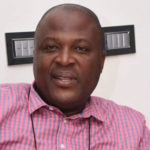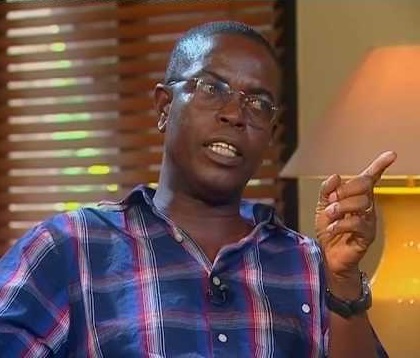Schools under trees. Thanks to other discoveries, the infamous slogan assumes other dimensions, one of these being ”schools on buttocks and bellies.” It refers to schools that have blackboards leaned against trees for teaching and learning in the open air. There are some schools that operate in makeshift structures coupled with recent revelations that at times the school children sat on the bare floor or lay face down to read and write.
Scenes like these are unacceptably dehumanizing and deserve condemnation. Unless you are insensitive, you will certainly be moved to do something about them, and the solution rests with vision, foresight, and practical steps.
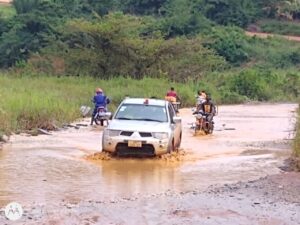
Notwithstanding claims and promises by previous administrations to wipe out the phenomenon, the problem persists. The existence of under-served schools up till now shows that governance is a continuum that follows the path of continuity. Yet, there are differences in terms of commitment, speed, and quality of service granted by each administration. The Akufo Addo-led government has provided a platform for the proper execution of this assignment, which is the provision of permanent, secure rural school infrastructure.
It bumped into the sordid situation, which immediately became part of its contemplations, amidst the numerous challenges facing Ghana. The new government set out to work on the project of eliminating schools under trees in the most transparent manner, the palpable evidence of which is communicated to the people from time to time.
The VALCO TRUST FUND was called to action to finance the program. After a feasibility study, and areas for interventions were identified, the project was further evaluated along standard parameters. It must be noted that the plan covers all sixteen regions of the country, underscoring the widespread nature of the crisis or menace called schools under trees, and by extension, schools in deplorable conditions.
School children learn in challenging circumstances such as being exposed to the vagaries of the weather, and ending lessons abruptly whenever there is a rainstorm. Another point of danger is the reoccurrence of dangerous reptiles in unenclosed classrooms. Last but not least is the fact that it becomes a painstaking exercise for the child when deplorable means no tables and chairs in classrooms.
Most of these schools are located in remote, deprived communities, and lack the facilities necessary for a sound academic experience. This is the gravity of the problem at hand, a 21st century Ghana still grappling with a past that is far outlived by circumstances, and stuck in a stagnation unbefitting of the present. Unfortunately, this is the reality of the people who deserve better.
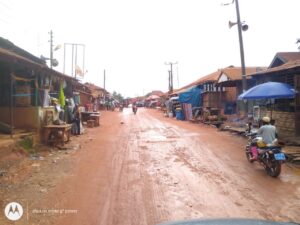
A few months into his second term, the Akufo Addo government embarked on a redemption drive. It is a mission to reverse the disorder and alleviate the plight of all those caught in dreary circumstances. It concerned not only teachers and pupils. It concerned parents and guardians as well, for some had to walk a distance just to send their wards to the school in the next town.
The launch was performed on the 1st of June 2021, and within one year 18 kindergarten schools were constructed by the VALCO TRUST FUND on behalf of the government and handed over to the communities. By the 22nd of February, 2022, the first phase which had been completed was showcased on national television.
One of the schools stood in the stead of the others, for the symbolic inauguration by the President, Nana Addo Dankwa Akufo Addo. Phase Two began soon afterward, thus nearly into the third quarter of 2023, a new set of 14 projects were completed.
The latest additions dominate this piece. Let’s tick away some of the items on this checklist, first the stock in the Ashanti region. The kindergarten school at Nyinatease in Amansie Central. The model schools are uniform on the basis of design. They have spacious classrooms with tables and chairs, spacious dining rooms with tables and chairs, offices and storerooms for teaching staff, water tanks, toilet water closets, slabbed compounds, and a walled fence. Some of the schools are located at Wawase in the Bekwai district, and Adansi Ahomahoma in Amansie West.
The kids for whom these infrastructures have been put in place are not yet mature enough to speak for themselves. Parents and guardians were there to acknowledge the changes taking place in the specific area of basic school education.
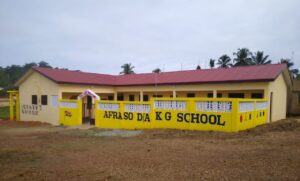
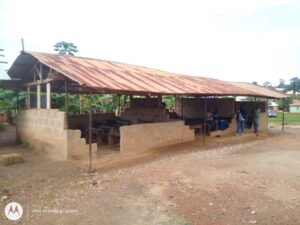
In all separate scenes, the contrasting tales between old and new structures are evident. Afraso in Amansie South had one of the worst kindergarten schools, before the unexpected arrival of the new to the huge sighs of relief in the inhabitants.
Carting building materials on some of the rough, unmotorized terrains over distances, points to official tenacity in the face of daunting challenges to get things done.
At Kyekyewere in Upper Denkyira East, in the Central region, the member of Parliament of the constituency told the fact-finding team that the interventions demonstrate the government’s commitment towards free compulsory universal basic education (FCUBE) as much as free senior high school education. He spoke at Dunkwa On Offin.
The set of 14 in the second phase also has a project at Akrofufu near Kwabeng in the Eastern region. Completing the list so far are those at Akrofufu R/C JHS and Kindergarten in Atiwa East in the Eastern region, Nkawkaw Presby Kindergarten in Kwahu West of the Eastern region, Abenaso Presby Kindergarten in Kwaebibirem district in the Eastern region, Mahiniso SDA Kindergarten in Sekyere East, Ashanti region, Mpasatia D/A Kindergarten in Atwima Mponua Asanti region, Sarpe R/C Kindergarten in Ejisu Asanti region, Odumase Presby Kindergarten Ashanti region, and Buokrom Estate M/A Kindergarten Ashanti region.
Eliminating schools under trees under the watch of President Akufo Addo is on a 5-year timeline, the instrument of implementation being the Valco Trust Fund.
There are no pretensions about its progress but it is trusted that the renewed effort will make a greater difference in the continual allocations across the country. First things first, it is reckoned the providers will meet the request from beneficiaries for teachers’ accommodations to attract postings to deprived areas.




